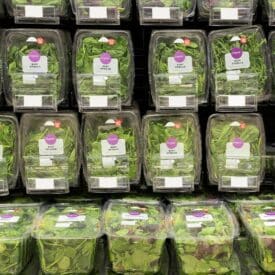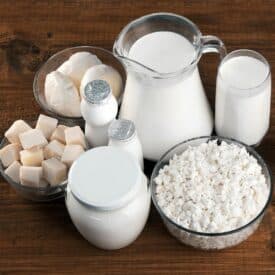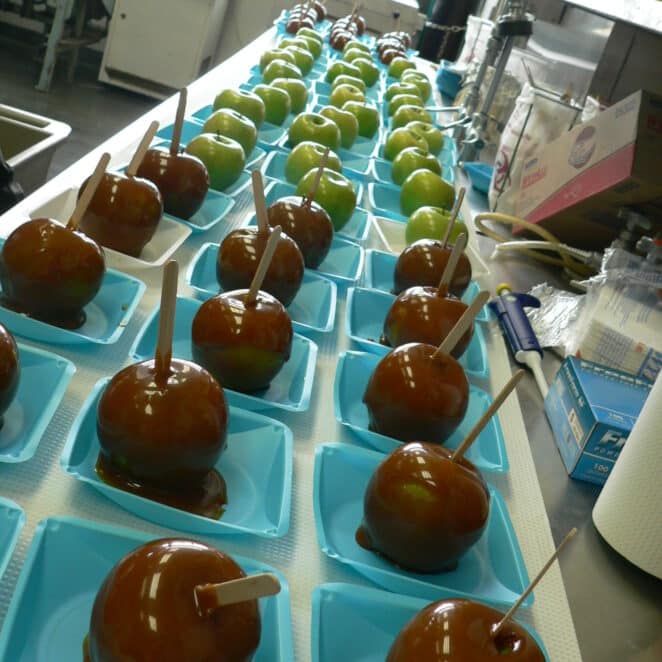
Where do “best by,” “use by,” “sell by” and other date labels come from?
Date labels, expiration dates, “best by” dates. Whatever you call them, you know they’re all over the place and it’s no surprise that shelf life confusion leads to about 7 million tons of food waste every year, according to the nonprofit ReFED.
Aside from infant formula, date labels aren’t federally regulated in the U.S. and manufacturers face a number of hurdles and incentives in determining the dates and shelf life guidance they print on their products. So how do they decide on dates? Here’s a peek behind the label. (And for more guidance on evaluating food past its printed date, check out other articles in our Behind the Date Label series.)
Why do manufacturers need date labels?
While most consumer-facing date labels aren’t federally regulated, many stores won’t accept products without some kind of date guidance–they need it for inventory management, according to Trevor Craig, corporate director of technical training and consulting at Microbac Laboratories, an analytical testing company that helps food producers determine their products’ shelf lives. According to ReFED, most states require date labels on some food products, resulting in a maze of different rules across the country.
Even in places with no date label regulations, manufacturers still have a legal obligation to back up claims about their products, including how long they expect the food to last.
What features of a food determine its shelf life?
When contemplating shelf life, manufacturers and food-testing labs consider the food’s makeup, processing, packaging and storage temperature. Here’s a non-exhaustive list of factors that influence how long a food can last and be eaten safely:
- Moisture level. Water, along with easy-to-access nutrients in a food, supports microbial growth. Bacteria needs more water than mold does, which is why a dry, aged cheese won’t rot like a tomato, but will eventually develop mold. And when it comes to safety and spoilage, food scientists don’t simply look at water content. Rather, they focus on measurements of how much water is “available,” as known as “water activity.” Microbes can’t access water that’s bound up with salt or sugar; adding ingredients like these can extend the life of the food.
- Acidity. Typically, the more acidic the environment, the harder it is for microbes to grow.
- Naturally present microbes. As a rule, raw foods have microbes on them. Even pasteurized foods contain bacteria (more on that below). Generally, these background microorganisms are harmless and the remote chance of a pathogen is an acceptable risk in eating fresh fruits and vegetables.* But while most of these environmental microbes won’t make us sick, some of them will eventually rot the food.
*Of course, raw meats are closely associated with bacteria that could make us sick, like salmonella, which is why it’s important to make sure they are cooked to a safe temperature before eating. - Heat treatment and processing. Manufacturers can use heat (and sometimes pressure) to kill bacteria in food. This can have varying effects on extending shelf life, depending on how hot the food gets, whether it is heated while it’s already in the package, and if it’s handled after the heating step. For example, basic pasteurization kills most active microbes, but not spores, which may germinate and grow in the food if it goes uneaten for long enough (for more on pasteurization and spores, check out this post about spoiling milk). Pasteurized foods typically still need to be refrigerated. Commercial sterilization, on the other hand, uses higher temperatures and eliminates both active bacteria and spores, making it a good fit for less delicate foods that can tolerate the heat. Properly sealed commercially sterilized foods (canned goods, for example) can be stored at room temperature, but usually need to be refrigerated after being opened and exposed to the wilds of your kitchen.
- Packaging. Packaging varies in terms of how much air and moisture it allows to pass through. In addition, many products are packaged with calibrated concentrations of some of the gasses found in the air we breathe. Oxygen, for example, is often limited because it can accelerate rancidity and fuel certain types of microbial growth. Some products are packed only in nitrogen. Over time, some packaging allows moisture to escape, leading to a dry product.
Depending on how a food processor balances these factors, a food may be fine at room temperature or may need to be refrigerated; sometimes refrigeration will keep the food good to eat for only limited periods of time.
Manufacturers vary greatly in how they arrive at shelf lives and date labels
Nicole Martin, a Cornell University food scientist who works with dairy companies, said she’s seen a wide range of approaches to determining shelf life. She said some companies do extensive research while others might use a default shelf life for all products. Manufacturers might look to historical data, food science concepts, predictive microbiology, and comparable products; they may also run their own shelf life studies, in-house and/or with a university or commercial lab.
In Australia, where date labels are required for products lasting two years or less, the government warns, “It is the manufacturer’s responsibility to determine shelf life. Reliable use by or best before times cannot be determined by guesswork or by copying the shelf life of a competitor’s product.”
Still, some companies may wing it, though hopefully only where food quality, not safety, is on the line. As a 2010 article in Cereal Foods World says, “The unfortunate reality is that speed to market can trump conducting shelf-life testing. Sometimes testing is skipped because a formulation change seems relatively insignificant, but we all know an example of when that resulted in an unexpected product failure.”
What do shelf life studies look like?
Often food producers will do in-house taste testing to make sure the product is up to their quality standards. But when it comes to chemical and microbiological testing, many companies commission university or private labs to study their products. Researchers literally fill shelves with foods and periodically test them for things like microbial growth and rancidity for as long as the manufacturer requests. Some tests are “accelerated” by storing the product at higher temperatures, higher humidities or in other conditions that increase the rate of aging. But that’s not practical for some foods, like, obviously, ice cream.
Many products, especially those that can be stored at room temperature, are processed and/or packaged in ways that are known to eliminate microbes or prevent microbial growth. In those cases, shelf life studies typically focus on things like flavor, texture, vitamin loss over time, and how long it might take oils in a food to go rancid. But if a food can potentially support spoilage organisms or pathogens while it sits on a store shelf or in a consumer’s fridge, many food companies do special studies to understand how long the food can last before microbes render it unfit to consume.
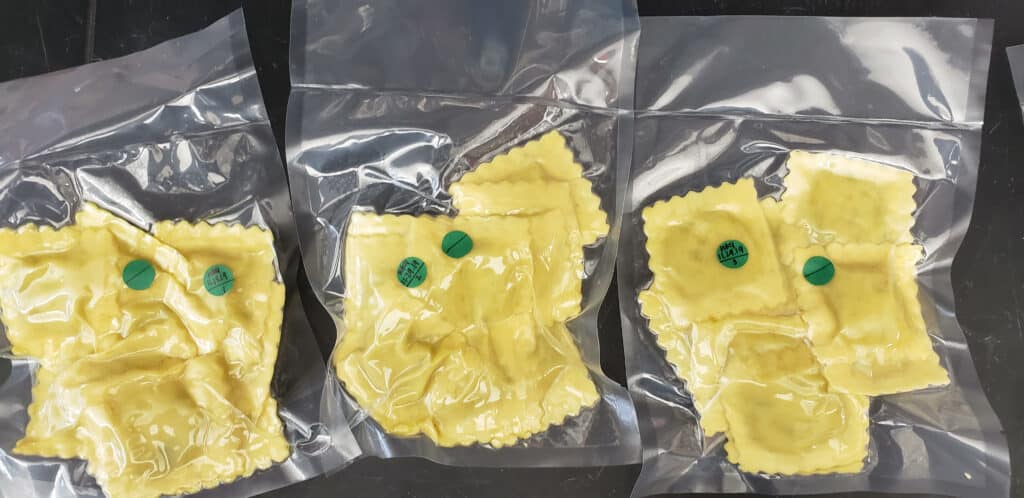
In one type of study, trace amounts of a pathogen are deliberately deposited on a food to see if and how the pathogen might grow, or even be eliminated (possibly by antimicrobial ingredients like acids or salts in the food). Kathy Glass, associate director of the Food Research Institute at the University of Wisconsin, described the process like this:
We purposely add the target microbe to the food in a way that represents potential “natural” contamination. We make small sample packages, store the inoculated product at various target temperatures (typically to represent temperature abuse that may occur at retail or in consumer refrigerators) and remove samples for testing (visual changes, changes in odor, other indicators of spoilage, and specially testing for the target microbe). Testing occurs beyond the “use-by date” (typically 1.5x what the product developer expects to happen at optimal storage temperatures); we frequently will continue testing until “gross spoilage.” We want to make sure the product is safe if the consumer refrigerator temperature is too high and if spoilage is not sufficient to deter consumption. There are multiple outbreaks where the consumer didn’t think the product smelled good but ate it anyway.
Jeremy Runyan who leads business development at Alliance Analytical Laboratories, Inc., said labs need to consider a number of variables, especially as foods with multiple components include a number of micro-habitats where tiny organisms could grow. So researchers test not only the cheese, meat, bread and lettuce on a sandwich, but also the places where those ingredients touch.
“There’s a multitude of factors that play into the shelf life studies that we develop,” he said.
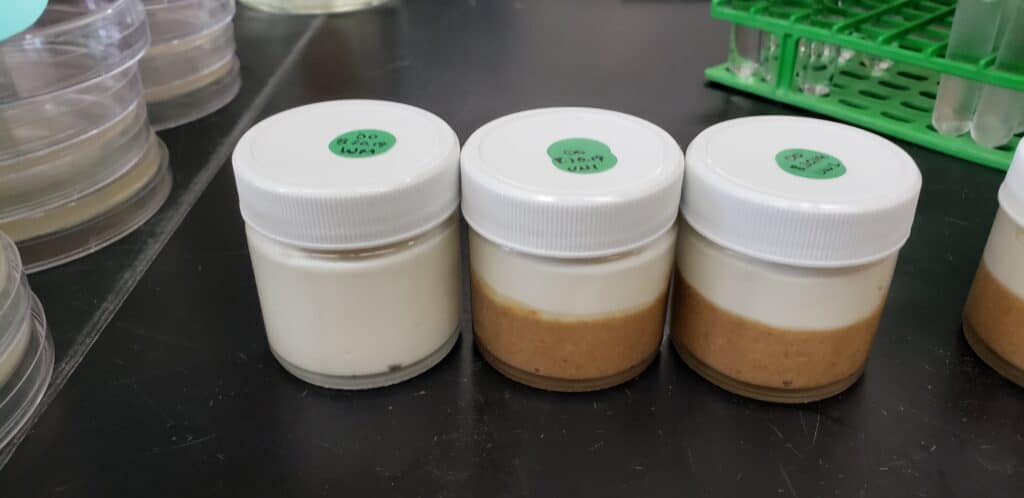
Perishable foods can have wildly different shelf lives
A “use by” date as short as a couple days could be reasonable on raw ground beef (though you may have some wiggle room, as we note in this article). For a freshly prepared entree or side dish, four days could also make sense. That’s the amount of time USDA advises for consuming leftovers (and that guideline is conservative).
For a sense of how shelf life can vary, consider a packaged soup sold in a refrigerated case near the deli counter of your grocery store (not a shelf stable canned soup, which would have gone through more processing). The heat of cooking would have killed many microbes (but not bacterial spores) and the soup would likely have been packaged in a way known to slow spoilage. Glass estimated that such a soup would probably have a refrigerated shelf life of about 60 days. But, she noted, the content of the soup would impact the type of microbes present and how long until the soup went bad.
“If you have vegetables grown in or near the ground, they’re going to carry a different type of microbe than you’d find on a meat product or a dairy product that’s gone through a pasteurization step,” Glass explained. “And some of those spoilage microbes are really difficult to control. So if I do a soup that has potatoes and carrots in a cream sauce, that’s going to spoil faster than if I had chicken and beans and a tomato sauce.”
Shelf life labels are influenced by everything from budgets to product release dates to how cautious a company is
You often hear that date labels, especially “best by” labels, indicate when the manufacturer believes the product will start to decline. In many cases that’s probably true, but, practically speaking, factors beyond the food’s ingredients and processing can influence a date label.
For example, a manufacturer may opt out of doing a study, or may want to get the product on the market before it has the time or money to do a long-range shelf-life study. So they may test with a shorter shelf life, start selling the product, and continue to test and extend the shelf life later. Or, they might just stick with a short shelf life. Some companies may also opt for a shorter shelf life as it makes their product appear more “fresh.”
At Microbac, Craig said that rather than test a product until its quality starts to decline, his lab asks the manufacturer what the target shelf life is and tests to make sure that’s valid. So, a product might be at peak quality for a year, but if the manufacturer only asks the lab to confirm six months of shelf life, that’s all the lab will do.
Doug Marshall, chief scientific officer for Eurofins Microbiology Laboratories, which helps companies determine shelf lives, noted that, with their reputations on the line, companies have an incentive to be conservative.
“Let’s take a refrigerated product being manufactured in the middle of summer,” he said. “It sits out on the loading dock. The truck is not held at the proper temperatures…Retail display cases are notoriously not held at 5 degrees C or lower. It goes into a consumer’s refrigerator and we know that consumers have trouble understanding what the temperature of their box is… So, just a million and one different variables can conspire to make a product not perform… So you’re going to be conservative in your shelf life expectations.”
On the other hand, Martin, with Cornell’s Milk Quality Improvement Program, pointed out that some manufacturers want to make their product’s stated shelf life as long as possible–that will mean more time for transit to more distant markets and more time on display at the store.
Sell by? Use by? Best by? Enjoy by? How food producers determine which phrase to use
In the United States, phrases like “best by,” “use by” and others have no legally defined meanings. Labs that help companies assess shelf life rarely weigh in on the language a company should use. Ultimately, the food producer decides on the final date and wording.
However, many manufacturers comply with a voluntary standard encouraged by the Consumer Brands Association, and the FMI, The Food Industry Association. That standard, called the Product Code Dating Initiative, suggests manufacturers use:
- “BEST if used by,” to indicate that the product might not be of optimal quality after the printed date. It may be shortened to “BEST by,” BEST” or “BB,” depending on space on the package.
- “USE by” to indicate that a safety or other potential failure (like declines in key nutrients in a baby formula) after the printed date.
The words “BEST” and “USE” are deliberately in all caps to get consumers’ attention. And manufacturers are also encouraged to use the phrase “freeze by” for products that can last beyond their refrigerated shelf life if frozen. But, not all manufacturers follow this standard (a random survey of 20 items in my kitchen found that 14 used the prescribed phrases or nearly did). Some manufacturers choose not to participate, some might not be aware of the standard and some might actually have their hands tied by state laws that contradict the voluntary standard.
Further confusing matters, researchers at Ohio State University found that consumers may just skip over the words and only fixate on the date itself. Their 2023 paper reported that 50 percent of study participants decided to dump milk after looking only at the date and not the phrase that came before it.
Many products also use the phrase “sell by.” This is, of course, guidance for the store, not the consumer. But consumers can understandably feel uneasy using the product after the “sell by” date (if you’re finding yourself unsure, explore our Behind The Date Label articles and our Food Index and reach out if you still have questions). I often see more perishable foods, like deli meats, bearing “sell by” dates, likely because, for safety reasons, the FDA’s Food Code calls for stores to sell or discard certain refrigerated, ready-to-eat foods prepared by the store within a certain time frame. Those FDA guidelines also account for some time in a consumer’s fridge, so, no, you don’t need to toss foods immediately after their “sell by” dates.
Standardizing date labels
While most date labels are not federally regulated, a patchwork of confusing and sometimes contradictory state laws do influence how stores and nonprofits handle food as it ages. For example, you can’t sell milk more than 12 days after pasteurization in Montana, even though it’s usually still good then). Groups like ReFED, the Harvard Food Law and Policy Clinic and others are campaigning for a mandatory federal standardization of date labels to reduce consumer confusion and enable more food donation. ReFED estimates that standardizing date labeling could save U.S. consumers about $1.5 billion to $3 billion every year.
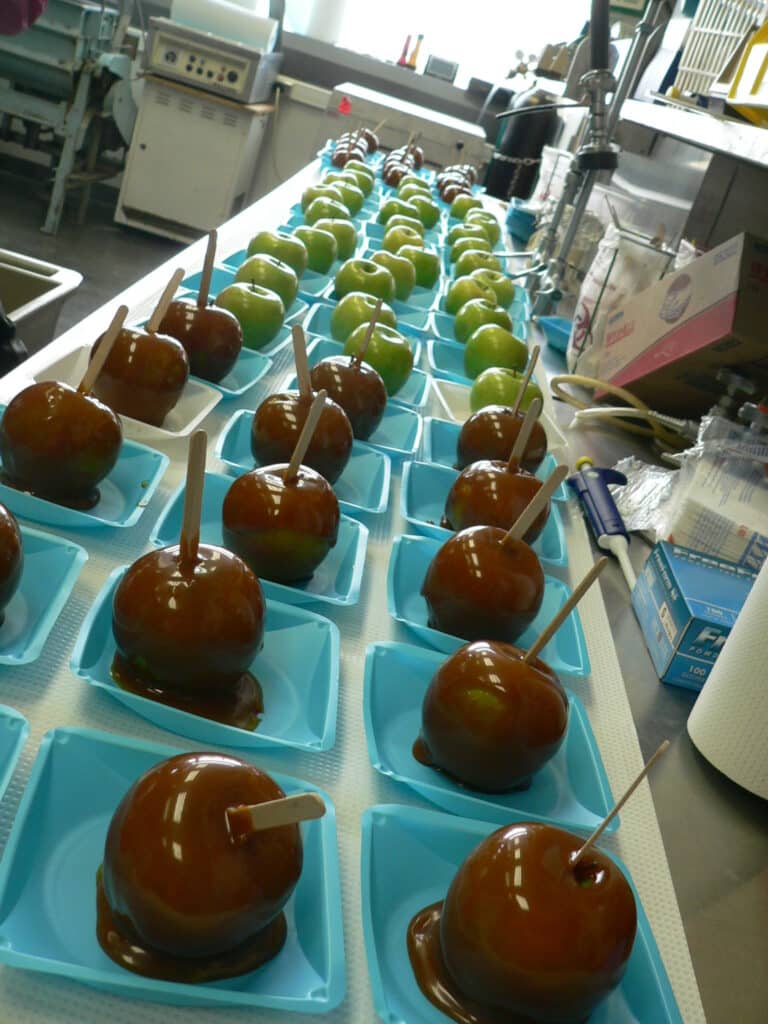
SOURCES:
- Kathy Glass, associate director of the Food Research Institute at the University of Wisconsin.
- Nicole Martin, associate director of the Milk Quality Improvement Program and Assistant Research Professor in Dairy Foods Microbiology at Cornell University.
- Trevor Craig, corporate director of technical training and consulting at Microbac.
- Douglas L. Marshall. Chief Scientific Officer. Eurofins Microbiology Laboratories. Also: Technical Director, Refrigerated Foods Association.
- Jeremy Runyan. Business Development. Alliance Analytical Laboratories, Inc.
- Shelf Life of Food: An Overview. Catherine Cantley and Janna Verburg-Hamlett. University of Idaho Extension. Published April 2021.
- Considerations for Establishing Safety-Based Consume-By Date Labels for Refrigerated Ready-to-Eat Foods. ADOPTED 27 AUGUST 2004, WASHINGTON, D.C. NATIONAL ADVISORY COMMITTEE ON MICROBIOLOGICAL CRITERIA FOR FOODS. Journal of Food Protection. Volume 68, Issue 8, 1 August 2005, Pages 1761-1775.
- ReFED Date Label Standardization Tool.
- Labeling Guidance: Best practice on food date labelling and storage advice. WRAP, Food Standards Agency (UK), Department for Environment, Food & Rural Affairs (UK).
- Industry Guidance on Setting Product Shelf-Life. Food and Drink Federation. 2017.
- Date labeling on pre-packaged foods. Government of Canada.
- Food Code Section 3-501.17 Ready-to-Eat, Time/Temperature Control for Safety Food, Date Marking. Food and Drug Administration.
- How to Determine the Shelf Life of Food: Guidance Document. Ministry for Primary Industries. New Zealand. 9 June 2016.
- CODEX GENERAL STANDARD FOR THE LABELLING OF PREPACKAGED FOODS. CODEX STAN 1-1985 (Rev. 1-1991)[1]. Food and Agriculture Organization of the United Nations.
- FSA takes revised approach to shelf-life safety guidance for chilled fresh beef, lamb and pork following consultation. Food Standards Agency (UK). May 2022.
- Guidance on date marking and related food information: part 1 (date marking). EFSA Panel on Biological Hazards (BIOHAZ), Konstantinos Koutsoumanis, Ana Allende, Avelino Alvarez‐Ordóñez, Declan Bolton, Sara Bover‐Cid, Marianne Chemaly, Robert Davies, Alessandra De Cesare, Lieve Herman, Maarten Nauta, Luisa Peixe, Giuseppe Ru, Marion Simmons, Panagiotis Skandamis, Elisabetta Suffredini, Liesbeth Jacxsens, Taran Skjerdal, Maria Teresa Da Silva Felicio, Michaela Hempen, Winy Messens, and Roland Lindqvist. EFSA Journal. European Food Safety Authority. December 2020.
- Guidance on date marking and related food information:part 2 (food information). EFSA Panel on Biological Hazards (BIOHAZ),Konstantinos Koutsoumanis, Ana Allende, Avelino Alvarez-Ordo~nez, Declan Bolton,Sara Bover-Cid, Marianne Chemaly, Robert Davies, Alessandra De Cesare, Lieve Herman,Friederike Hilbert, Maarten Nauta, Luisa Peixe, Giuseppe Ru, Marion Simmons,Panagiotis Skandamis, Elisabetta Suffredini, Liesbeth Jacxsens, Taran Skjerdal,Maria Teresa Da Silva Felıcio, Michaela Hempen, Winy Messens and Roland Lindqvist. EFSA Journal. European Food Safety Authority. Adopted March 10, 2021.
- Food Microbiology: An introduction. Karl R. Matthews, Kalmia E. Kniel, Thomas J. Monteville. Fourth Edition. ASM Press. Washington, DC. 2017.



